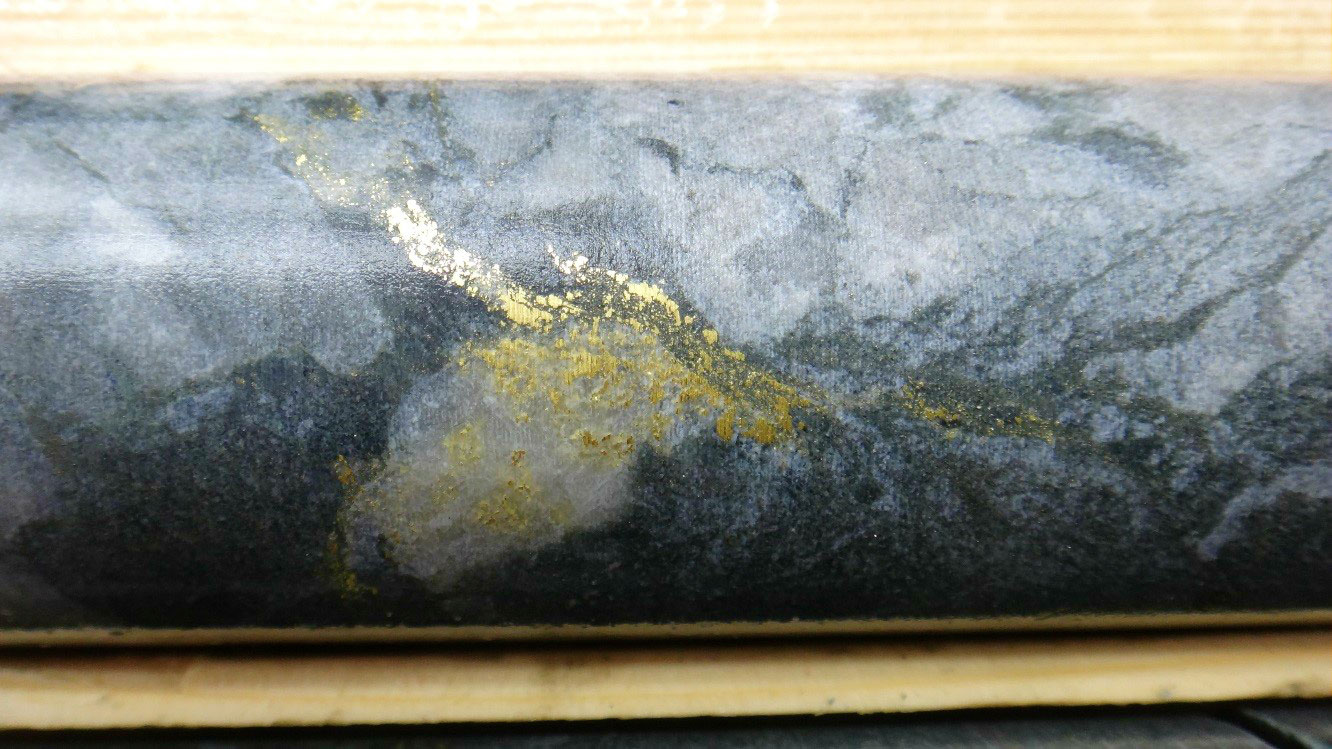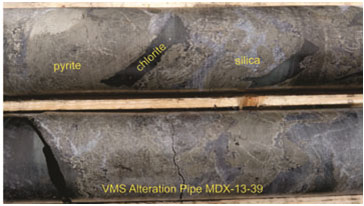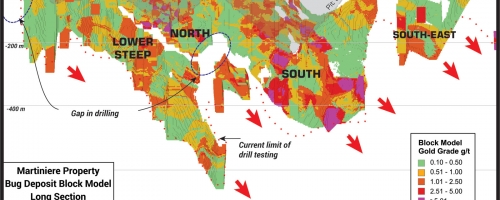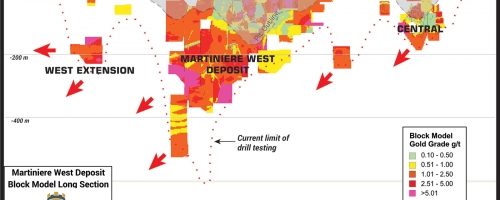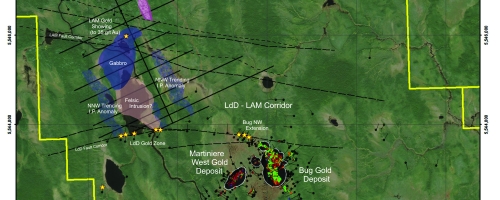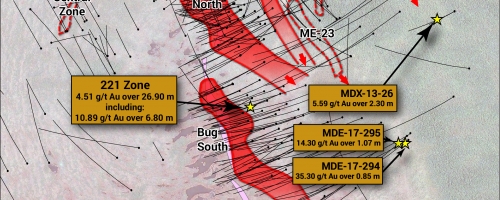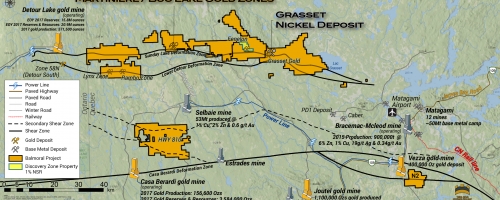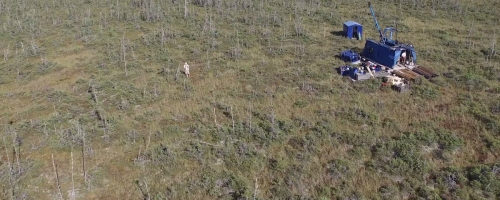Introduction
Advanced Exploration - Gold - Detour Lake Area, Quebec
- The
Martiniere Property is located centrally within the Detour Gold Trend Project,
approximately 45 km east of, and along geological trend from, Canada’s second
largest gold mine and a similar distance north northeast of Hecla’s Casa
Berardi gold mine
- In March
of 2018 Balmoral published an initial resource estimate for the Martiniere Gold
System on the property which outlined 591,000 ounces in the Indicated resource
category and an additional 54,000 ounces in the Inferred Category split 73%/27%
between open pit and underground resources (see Resource and Reserve page for
additional details).
- The Martiniere Gold System features two prominent deposits, the Bug and Martiniere
West gold deposits and a number other structurally controlled gold occurrences
including a series of recent discoveries in the Lac du Doigt area 2.0 km
northeast of the main deposits.
- The
Martiniere property also hosts indications of VMS style mineralization which
have locally also been show to host gold mineralization
- The vast majority of the 9.5 x 7.0 kilometre Martiniere Property remains untested beneath extensive overburden cover
- Balmoral owns
a 100% Interest in the Martiniere Property
Gold Mineralization at Martiniere
Three regional scale east-west trending structural corridors cut through the Martiniere Property including the Sunday Lake deformation zone which hosts the nearby Detour Gold Mine. This situation is analogous to the geological framework which hosts now century old Timmins gold camp.
Since the first discovery of gold on the property in 1990’s, and Balmoral’s acquisition of the property in 2010, the Martiniere property has demonstrated the attributes of the large gold bearing systems which are common throughout the Abitibi region:
- Multiple gold bearing, regional scale structures
- Both broad lower grade and narrower but high to bonanza grade vein style mineralization
- An association of gold mineralization with both felsic and mafic intrusive rocks
- Tremendous vertical continuity to the gold mineralized systems
- Evidence for multiple phases/generations of gold mineralization
To date the Company has defined three principal areas of gold mineralization;
- The SW-NE trending Martiniere West gold deposit which was first intersected by the Company in 2011 following up on earlier results by Cyprus Canada
- The Bug gold deposit which was discovered by the Company in 2013-14
- The LdD (Lac du Doigt) gold system which was discovered by the Company in late 2015 and is still in the early stage of evaluation
Gold mineralization in each of these domains has its own unique characteristics despite their close spatial proximity providing clear evidence for a long-lived gold mineralization system at Martiniere
MDE-14-143 Bug Lake North Deposit, Footwall Zone
Gold Smeared on Outside of Core
Base Metal Potential
In 2011 Balmoral reported the discovery of a volcanogenic massive sulphide ("VMS") system mineralization on the Martiniere Property. VMS systems similar to the one discovered at Martiniere are globally important suppliers of copper and zinc and can also contain significant gold, silver, lead as well as recoverable quantities of other metals. Drilling in the winter of 2015 (see NR15-05, Apr. 20, 2015) intersected semi-massive sulphides believed to be associated with this discovery which reported copper, zinc, gold and silver assay results of potential economic interest. As well the Company intersected a strongly brecciated interval at the upper margin of the Martiniere East VMS system which returned 74.60 g/t gold and 1,390 g/t silver along with strongly elevated copper, zinc, cadmium and tungsten (see drill hole MDE-11-09 – NR11, Dec. 5, 2011).
Immediately to the south of the Martiniere Property is the former producing Selbaie deposit which produced 53 million tonnes of ore at average grades of 1.0% copper, 1.9% zinc, 41 g/t silver and 0.6 g/t gold. The Mattagami VMS camp, which hosted a number of productive VMS deposits including the currently producing Bracemac-MacLeod deposit, sits in the same geological domain approximately 100 kilometres to the east, just southeast of the Company’s Grasset Property.
Second Potential VMS System at Martinere - Alteration Pipe
Exhalative Horizon
